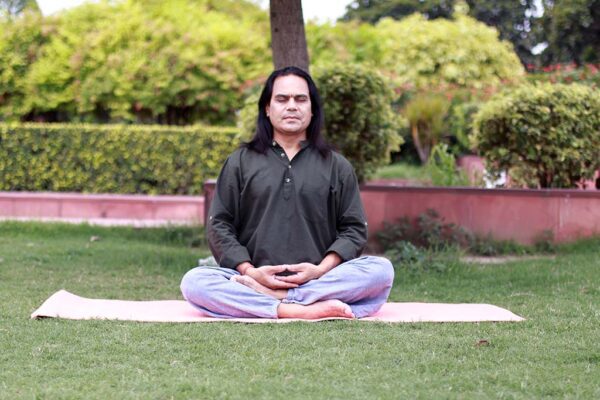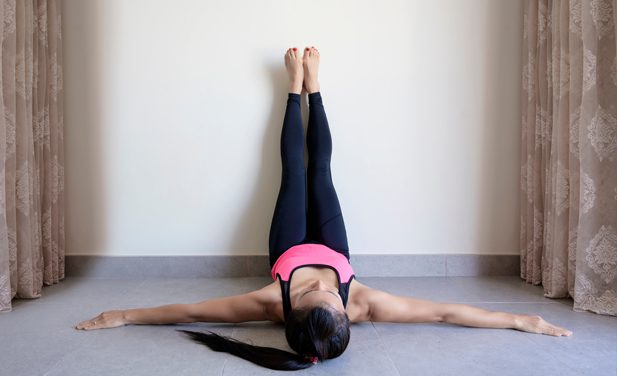Yoga for Diabetes

While you can do Yoga for Diabetes at home, it’s best to consult a physician before starting a yoga routine. It’s important to practice yoga slowly and gently and to avoid any dangerous poses. Those with diabetes should also avoid performing poses that increase pressure on their eyes or that are too fast-paced.
Improves insulin sensitivity
There is a growing body of evidence showing that physical activity improves insulin sensitivity. Physical activities, like aerobics and resistance training, help to reduce glucose and calories in the blood. Even moderate walking can help reverse insulin resistance. Not only does moderate walking help to burn excess fat, but it also reduces stress levels.
In order to assess whether yoga can improve insulin sensitivity, researchers must look for studies conducted in various cultures. Many studies of yoga have taken place in Asia, where about 60% of the world’s diabetic population lives. There are also significant ethnic disparities in the rate of type 2 diabetes in Western countries. Performing research in countries with varied cultures and diets may help translate research findings into policy and practice.
A review of several studies of yoga and diabetes found that it improved insulin sensitivity. The research also noted improved blood sugar control and lower cholesterol levels. Practicing yoga daily also improved the pancreatic’s ability to produce insulin.
Improves blood sugar levels
Regular yoga practice has been proven to help lower blood sugar levels. Studies show that regular practice reduces fasting plasma glucose levels by 10% or more. These findings are encouraging for Type 2 diabetics who want to keep their blood glucose under control. This form of exercise also reduces stress and promotes better circulation. People with diabetes should consider practicing yoga for at least 30 minutes a day to see results.
People with diabetes should monitor their blood sugar levels before and after yoga practice. This will help determine if yoga can decrease the amount of medication that is needed to control the condition. It is important to practice yoga in moderation and consult your health care provider before reducing the dose of medication. Although most people do not need to fast before yoga, some people with diabetes are advised to take a light snack before yoga to reduce the risk of hypoglycemia.
The seated triangle pose strengthens abdominal muscles and helps balance blood sugar levels. It also improves the functions of the pancreas and the liver, two important organs involved in sugar metabolism. During the pose, the legs should be bent at the knees and the feet should be held together.
Reduces oxidative stress
A recent meta-analysis of four studies on yoga for diabetes suggests that it decreases oxidative stress and improves lipid profiles in people with type 2 diabetes. Further studies are needed to confirm these results and to determine whether yoga affects other health parameters, such as the psychosocial aspects of diabetes.
The authors evaluated all articles published in reputable scientific journals on the subject of yoga and oxidative stress. Specifically, they focused on the reduction of oxidative stress and the enhancement of antioxidant status in patients with diabetes, hypertension, and kidney disease. They also studied the effects of yoga on lipid profile and mental health, as well as the oxidative stress-related biomarkers.
A meta-analysis of eligible studies was conducted using RevMan software. Mean differences were calculated for continuous data using the generic inverse variance method of analysis. In addition, mean differences were combined by calculating a factor of 18 for reported FPG values in the articles. The researchers also assessed statistical heterogeneity by performing the I-squared test.
This multi-faceted approach reduces oxidative stress by increasing antioxidant enzymes and compounds through the Nrf2/ARE pathway. These antioxidants are important for the prevention and management of type 2 diabetes.
Improves lipid profiles
Researchers conducted a randomized controlled trial to see whether yoga therapy for diabetes improves lipid profiles. The study included 11,254 participants, including 5932 yoga practitioners and 5322 control practitioners. There was a 9% dropout rate. Among those who continued, post-intervention lipid profile measurements were not available for all participants. One reason for this could be due to time constraints. Another reason may be due to the local conditions that made collecting blood samples difficult.
In the study, participants in both groups of yoga practitioners showed improvements in the three lipid profiles. This included TG, HDL, and LDL. The study also found that the participants’ levels of high-density lipoprotein (HDL) increased while TC decreased significantly.
The results show that yoga has multiple benefits for diabetes. It has been shown to improve glycemic control, lipid profile, and oxidative stress. It also reduces fasting blood sugar, systolic blood pressure, and body mass index. One group of participants with diabetes also reported reduced oxidative stress levels and improved lipid profiles.
Researchers suggest that yoga may have positive effects on the lipid profile of individuals with type 2 diabetes. It also has beneficial effects on blood pressure, glucose tolerance, and insulin sensitivity. However, more high-quality studies are needed to validate these effects in populations with T2DM.
Reduces body weight
Yoga is a form of exercise that helps people with diabetes reduce body weight and improve their health. The term ‘yoga’ comes from the Sanskrit word ‘yuj,’ which means “union.” Yoga is a form of exercise that integrates body, mind, and emotions. It improves many factors that contribute to weight gain, including stress. In addition to physical discomfort, stress also causes people to crave sugary foods and sleep less.
The benefits of yoga have been proven in numerous studies. Short-term studies have shown that practicing yoga has a beneficial impact on glycemic control and lipid profiles in people with diabetes. Researchers have also shown that yoga reduces anxiety and improves general wellbeing, two of the most important risk factors for diabetes.
Yoga and healthy eating are great ways to lose weight. They also have the added benefits of improving your relationship with your body and improving your mindfulness. Reduces body weight with yoga for diabetes helps regulate blood sugar levels and improves concentration. While the physical activity and diet are beneficial, the ‘yoga poses’ are important as well, helping people with diabetes to increase their strength and endurance.
Reduces stress
Practicing yoga for diabetes can reduce stress, which is crucial to the management of diabetes. Many studies have shown that yoga reduces stress and improves health, including blood glucose levels and blood pressure. It also reduces anxiety and helps improve dietary practices. Using yoga as a treatment for diabetes can also help manage comorbid conditions, such as depression and anxiety.
People with diabetes should practice yoga under the guidance of a trained professional. There are many styles of yoga, and many are very safe for people with diabetes. However, others can be very strenuous and can cause complications. Beginners should avoid fast-paced yoga practice. They should also watch out for signs of pain or discomfort.
Researchers have also shown that yoga helps balance glucose levels in the body, thereby reducing feelings of lethargy and tiredness. This can help people with diabetes become more motivated to exercise and eat a healthy diet. Type two diabetes is also associated with obesity and high cholesterol levels, so preventing these health problems early can help prevent further complications from occurring. The more you practice yoga, the less likely you are to develop type two diabetes, according to the findings of a 2014 study.
Another benefit of yoga is its positive impact on blood pressure levels. In addition to reducing blood pressure and improving mood, yoga can also help people with diabetes manage their diabetes by reducing their stress levels. A reduction in stress can lead to a significant improvement in diabetes management and lower blood pressure and heart disease risk.
Prevents complications
Yoga can help manage diabetes and reduce the stress factor. It also reduces the risk of heart problems associated with the disease, such as high blood pressure and high cholesterol. Research shows that yoga can also reduce the changes in blood vessels that contribute to these problems. Yoga can also help you improve your lifestyle, including dietary habits and behavioural changes.
A recent study showed that yoga can help people manage their diabetes. It improved the symptom scores of people with diabetes and reduced fasting and postprandial blood sugar levels and anti-diabetic drug needs. However, more research is needed to confirm the effectiveness of yoga as a treatment for diabetes.
Research into the benefits of yoga for diabetes must be carried out in diverse cultures. Most studies on yoga have been conducted in India, which may not be the best place to study it. However, there are a growing number of studies demonstrating the benefits of yoga in people with type 2 diabetes.
As a complementary treatment for type 2 diabetes, yoga combines physical exercise, meditation, and breathing techniques. The combination of these techniques improves blood glucose levels, body composition, and other health parameters. It also reduces the risk of diabetes complications. When performed regularly, yoga can help control and reverse diabetes.
















